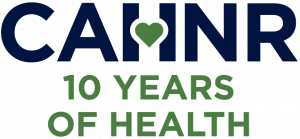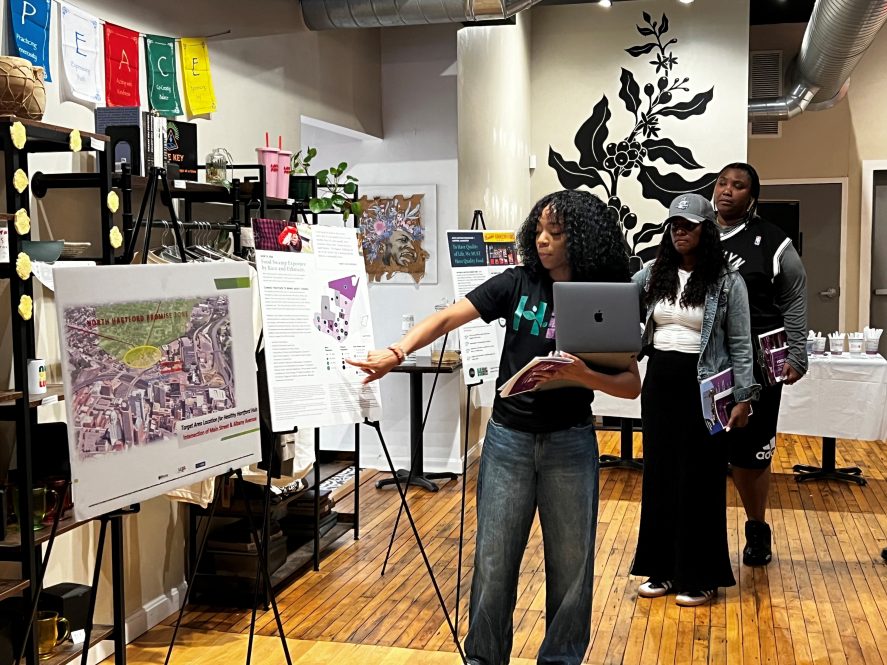Links between eating a balanced diet and overall health are well-established. But for people living in “food swamps” these healthy options just aren’t readily available.
A new study in the Journal of Human Behavior in the Social Environment highlights the lived experiences of women of color living in a food swamp in North Hartford, and both the challenges and opportunities for accessing healthy food in their neighborhood.
highlights the lived experiences of women of color living in a food swamp in North Hartford, and both the challenges and opportunities for accessing healthy food in their neighborhood.
The study was a collaboration between the UConn Department of Allied Health Sciences, the Rudd Center for Food Policy and Health, the UConn School of Medicine, and North Hartford community members.
Food swamps are areas characterized by an oversaturation of fast food and other highly processed food options. They also have a lack of grocery stores with fresh produce.
“Food swamps are areas where residents don’t have access to fresh, healthy foods,” says Curtis Antrum, lead author of the study and graduate assistant. “Instead, they are surrounded by establishments like fast food or corner stores. People of color in poorer neighborhoods are disproportionately impacted by food swamps.”
The researchers used a method known as Photovoice for this study. This research method involves study participants taking photos, in this case, of the food environment in their neighborhood, and adding voice notes narrating their experience.
This method empowers participants to engage in citizen science by sharing more detailed and personal information with the researchers.
“Photovoice actually prompts a focus on action,” says Kristen Cooksey Stowers, assistant professor in the Department of Allied Health Sciences and senior author on the paper. “Not just engaging lived experience and documenting problems and health inequities, but also keeping the dedication to engage lived experience and community voice when you are carving out and evaluating solutions.”
From these accounts, the researchers identified some key themes in the challenges participants face, such as a lack of access to grocery stores; advertising and marketing that push “junk” food; lack of transportation to access healthier options; unaffordability of fresh produce; the impact of junk food on their children’s school performance; the prominence of alcoholic beverages over health alternatives; and the quality of fresh food at their local stores.
“Anyone paying attention knows that North Hartford residents have been impacted by degradation and segregation; however, through the Photovoice approach, our lived experiences within this food swamp are urgent and impossible to ignore,” Mary Holter, a member of the Community Action Task Force (CATF).

Participants did identify positive aspects of their food environment as well, such as the availability of culturally relevant foods for the city’s large Caribbean and Hispanic populations, like plantains and yucca. However, participants note that this does not fully meet their needs in the absence of other produce.
The paper concludes by highlighting the assets the community already has and how these can be bolstered by policy changes and increased funding.
“The message that we heard from [community members] was that they want more investment in our community assets,” Cooksey Stowers says.
This paper reflects the overarching aim of Cooksey Stowers’ lab, the Health Equity Lab for the People (HELP), in shifting the field away from a negative framing of problems, but instead places the focus on solutions.
Cooksey Stowers’ lab hopes to change this by empowering community members to have their voices heard by researchers and policy makers.
“It’s very important from a personal level that we can reach them where they are, so they can participate actively and see the results,” Antrum says.
The team plans to replicate this pilot study with a larger sample that includes men and women and will look at the impact of poor nutritional health on students’ educational outcomes. The team has also looked at how policies create food swamps. For example, in Hartford, corner stores and other non-grocery establishments that sell food were coded as grocery stores, giving policy makers an inaccurate picture of food access across the city.
“The Photovoice Project is being shared in multiple venues, and as the saying goes, a picture is worth a thousand words. But in this case, the voice and lived experience of residents are captured alongside the photos, substantiating a more compelling case for the change that is required to move the needle towards health equity,” says Angela Harris of Phillips Metropolitan CME Church.
Working with community partners, Cooksey Stowers successfully lobbied to have the definition updated to require “grocery stores” sell a certain percentage of fresh foods and a square footage requirement in 2022.
“That was a barrier to change,” Cooksey Stowers says. “Because as we were presenting data to folks outside of Hartford trying to recruit a supermarket operator, trying to get state-level support, on paper they were seeing that there were grocery stores there.”
Other policies can help restrict new fast-food establishments from opening while encouraging community-owned health-promoting businesses like cafes and restaurants with healthy options and fitness establishments. They presented this policy proposal to Hartford policy makers at the end of September.
“They are envisioning a health-topia, not an area that is filled with dialysis treatments,” Cooksey Stowers says. “They want to focus on prevention, not just treatment.”
“To make a real impact, we need sustainable investment and policy changes to turn food deserts and swamps into spaces that promote health, equity, and opportunity,” says Denise Holter, CATF chair. “This isn’t just about access to healthy, affordable food—it’s about ensuring dignity, choice, and a brighter future for everyone.”
This work relates to CAHNR’s Strategic Vision area focused on Promoting Diversity, Equity, Inclusion, and Justice and Enhancing Health and Well-Being Locally, Nationally, and Globally.
Follow UConn CAHNR on social media



